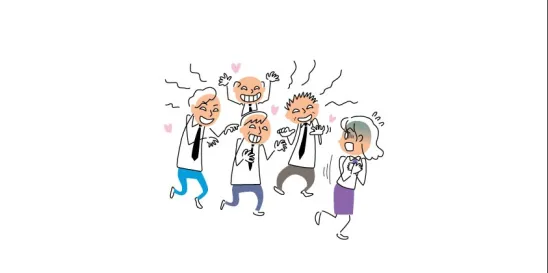The U.S. Equal Employment Opportunity Commission (EEOC) released its long-awaited proposed guidance on workplace harassment, which includes advice to employers concerning online misconduct, LGBTQ rights, and abortion issues. The guidance is open for public comment until Nov. 1, 2023. This is the first guidance the EEOC has issued on harassment since its 1999 “Enforcement Guidance on Vicarious Liability for Unlawful Harassment by Supervisors.”
Per the proposed guidance, “[a]lthough many high-profile harassment cases involve harassment based on sex, race, or national origin, the EEOC also enforces laws prohibiting work-related harassment based on color, religion, disability, genetic information, and age (40 or over). This Commission-approved enforcement guidance presents a legal analysis of standards for harassment and employer liability applicable to claims of harassment under the equal employment opportunity (“EEO”) statutes enforced by the Commission.” This proposed guidance also consolidates, and supersedes, several earlier EEOC guidance documents: Compliance Manual Section 615: Harassment; Policy Guidance on Current Issues of Sexual Harassment (1990); Policy Guidance on Employer Liability under Title VII for Sexual Favoritism (1990); Enforcement Guidance on Harris v. Forklift Sys., Inc. (1994); and Enforcement Guidance on Vicarious Employer Liability for Unlawful Harassment by Supervisors (1999).
The proposed guidance focuses on (1) covered bases and causation; (2) discrimination with respect to a term, condition, or privilege of employment; and (3) employer liability:
(1) Covered bases and causation: Workplace harassment is covered by EEO statutes only if it is based on an employee’s legally protected characteristics, i.e., race; color-based harassment based on skin tone; national origin; religion; sex; pregnancy, childbirth, or related medical conditions; sexual orientation and gender identity; age; disability; genetic information; and associational discrimination. Causation is established if the evidence establishes that the complainant/employee was subjected to harassment because of their protected characteristic. EEO statutes do not prohibit harassment that is not based on a protected characteristic. Stereotyping based on social or cultural expectations, whether negative or positive, concerning how individuals of a particular group should act, may also constitute harassment.
(2) Discrimination with respect to a term, condition, or privilege of employment: For an employer to be liable for workplace harassment under an EEO statute based on a protected class, as noted by the Supreme Court in Meritor Savings Bank, FBS v. Vinson, the harassment must affect a “term, condition, or privilege” of employment. To be actionable absent an explicit change to the terms or conditions of employment, the harassing conduct must be objectively and subjectively “sufficiently severe or pervasive to alter the conditions of [the employee’s] employment and create an abusive work environment.” Of course, the EEO statutes do not impose a general civility code for the workplace. In certain circumstances, a single incident of harassment may result in a hostile work environment: sexual assault, sexual touching of an intimate body part, physical violence or threat of physical violence, threat to deny employment benefits for rejection of sexual advances, and/or use of a sufficiently severe racial epithet. Conduct that is not directed at the complainant nonetheless may create a hostile work environment.
(3) Employer liability: The standard of liability depends on the relationship of the harasser to the employee and the nature of the hostile work environment.
a. Proxy/alter ego – An individual is considered a proxy or alter ego of the employer if the individual possesses high rank or authority such that their actions can be said to speak for the employer, including, partners, corporate officers, or high-level management. The employer is automatically liable for a hostile work environment created by the harasser’s conduct. There is no defense to liability, and the harasser’s conduct is considered the employer’s conduct.
b. Supervisor with tangible employment action – Employer is vicariously liable for the harasser’s conduct and there is no defense to liability.
c. Supervisor with no tangible employment action – Employer is vicariously liable, but the employer may limit its liability pursuant to the Faragher-Ellerth affirmative defense, which is available when the supervisor did not take a tangible employment action against the complainant as part of the hostile work environment. If the Faragher-Ellerth defense is available, the employer bears the burden of proof with respect to the elements of that defense. The elements are that the employer acted reasonably to prevent, and promptly correct, harassment, and the complainant unreasonably failed to use the employer’s complaint procedure or other steps to avoid/minimize harm from harassment.
d. Any person other than those summarized above – Employer is liable for the hostile work environment created by the harasser’s conduct if the employer was negligent and failed to act reasonably to prevent the harassment or take reasonable corrective action when the employer knew or should have known about the harassment.
Additionally, the proposed guidance includes detailed examples relating to national origin, race, and religion, in addition to sexual harassment. The guidance further incorporates the Supreme Court’s decision in Bostock v. Clayton, which held that sex-based discrimination includes bias based on sexual orientation or gender identity. For example, intentional and repeated use of a name or pronoun inconsistent with the individual’s gender identity, i.e., misgendering, or lack of access to a restroom consistent with the individual’s gender identity, may be harassment. A further addition that was not previously included in EEOC guidance is the inclusion of conduct that occurs within a virtual work environment, including social media, which may contribute to a hostile work environment. Moreover, harassment based on a “woman’s reproductive decisions, such as decisions about contraception or abortion,” are also included in the guidance as potentially actionable conduct.




 />i
/>i
